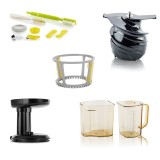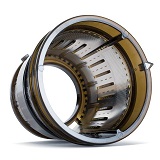Problem Solving
The Versapers has a fine and a coarse strainer. If you want minimal fibers, use the fine strainer. Some products, such as pineapple, fennel or celery have from origin many small fibers in them. The fine strainer also allows some of these fibers to get through. It helps to enter the products at a gentle pace. At a faster pace, the strainer gets more full and the juice will aslo be squeezed through the upper ring. Because the upper holes of the strainer are slightly larger, fibers can get through more easily. An additional possibility is the pulp strainer. You can easily put this on the juice container, so the juice will get an extra filtering. This pulp sieve costs € 7,50 euro plus shipping and can be ordered through: http://versapers.nl/accessories/pulp-zeef.html















